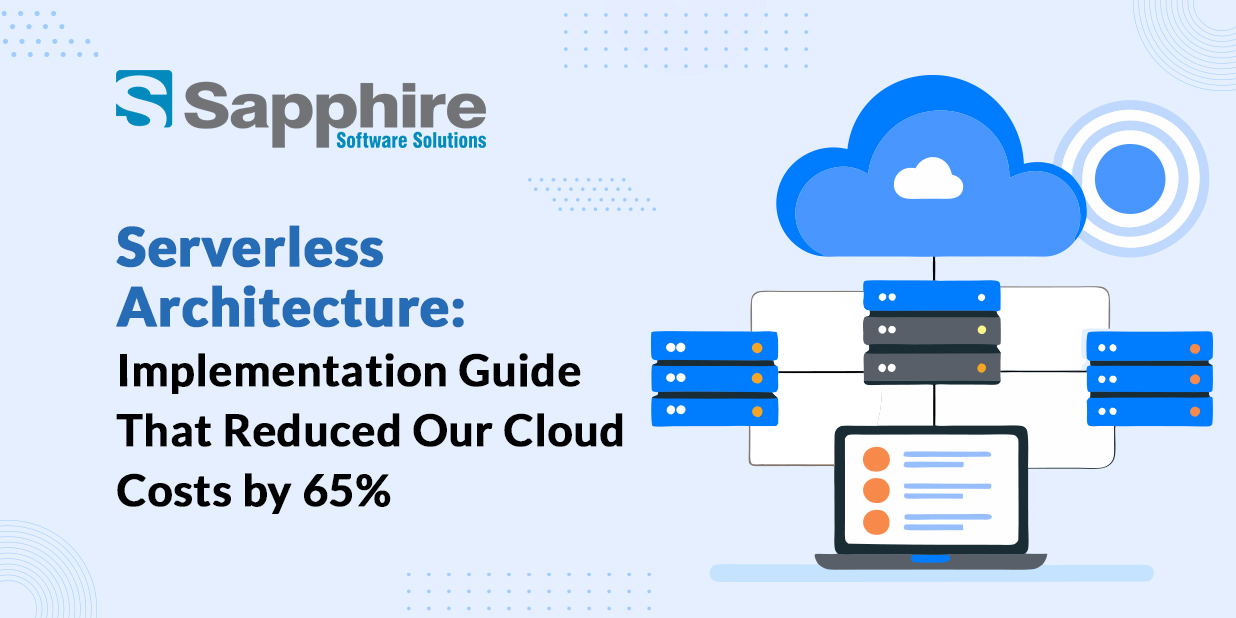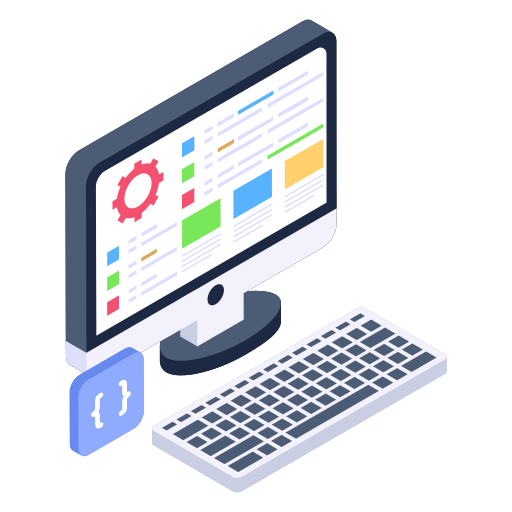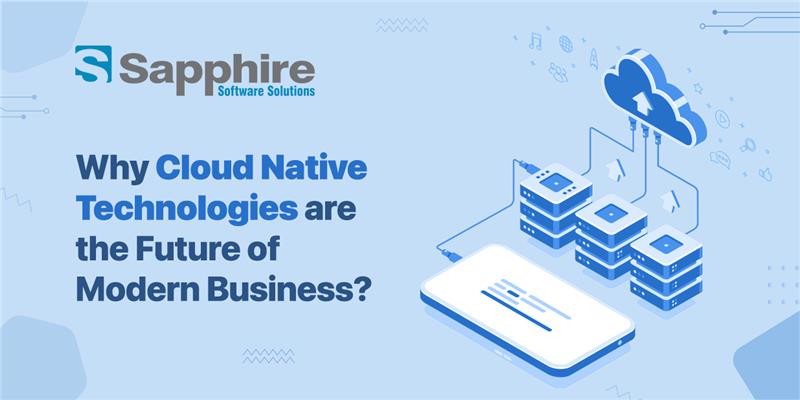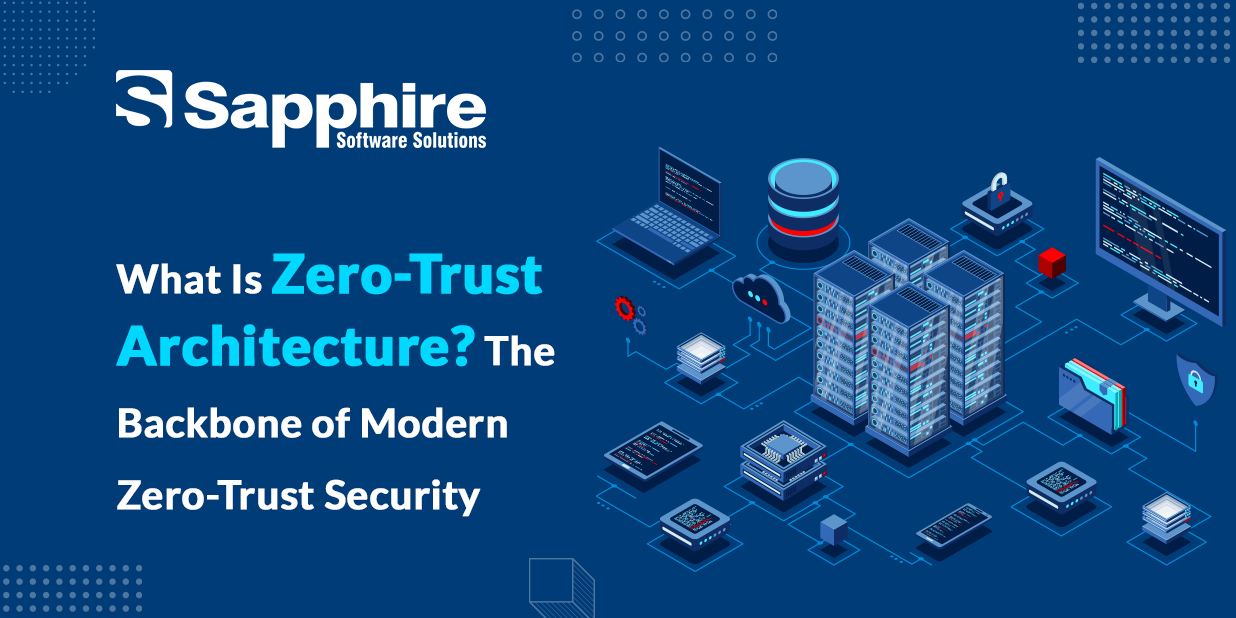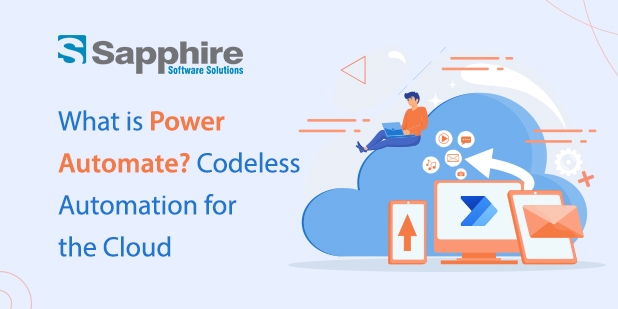What is Serverless Computing? A Simple Definition with Real-World Examples
For those who have not heard the term before, the expression “serverless computing” might be at best a tech oxymoron. After all, how can computation exist without servers? Like many of the tech-related events that have occurred lately, serverless computing doesn’t mean that servers are gone; it simply means developers no longer care (or need to care) about them.
The definition of serverless computing is as follows: serverless computing is a model of cloud-computing where cloud providers will use some cloud-based technique to manage the infrastructure for you. Developers write and deploy code, without having to provision or manage the server. The cloud provider takes care of the infrastructure and code execution, including scaling code, security patching, maintaining underlying infrastructure, etc.
A useful metaphor is ordering food at a restaurant versus cooking your own food at home. With traditional infrastructure (or cooking at home) you are responsible for everything from grocery shopping to cooking to cleaning. With serverless architecture, you make an order (your code) and someone else is responsible for everything else (infrastructure, scaling, etc.).
Now let’s examine a couple of examples of real-world situations:
Netflix utilizes serverless computing to offload encoding jobs, allowing it to provide a seamless video streaming experience to millions of users around the globe.
- Airbnb uses serverless architecture with cloud computing for image-processing workflows, letting it scale where needed without any infrastructure concerns.
- By adopting serverless architecture, companies can save development time, reduce operational overhead, and focus on innovation.
On top of that, education platforms like Coursera and Khan Academy are using serverless architecture workflows to manage user activity, tailor course recommendations, and trigger notifications in real-time—all without having to manage a single hardware server. The use-case is evidence that makes it clear how scalable and flexible serverless architecture with cloud computing really is.
Larger companies are whirring along with cloud computing, but the smallest companies are quickly catching on too. You might think of a startup deploying a mobile application for food deliveries. Instead of having to build and maintain an entire back-end infrastructure, it could simply use serverless computing services to perform user authentication, payment processing, location tracking, and notifications—those services would scale upward with tomorrow’s demand.
Top Benefits of Serverless Architecture for Businesses:
Why are so many organizations going serverless? The benefits of serverless architecture are both strategic and technical.
- Cost Efficient You only pay for what you use. Traditional servers can sit idle and have costs added up. Serverless architecture is event-driven and you only pay for your code when it runs. This matters even more if you are a startup or your app has sporadic traffic.
- Automatic Scaling Whether you are serving 10 users or 10 million, serverless computing services automatically scale. There is no need to worry about provisioning additional instances or load balancing, it is all done for you.
- Faster Time to Market With the infrastructure out of the way, your development team can deploy applications much faster. That speed can be a massive advantage to your business, especially in markets that demand constant innovation.
- Built-In High Availability Leading serverless computing services like AWS Lambda or Azure Functions come with redundancy and failover out of the box, so your apps will always be up and running.
- Security and Maintenance Provided Since you are not responsible for OS vulnerability patching and/or oversight of threat actors, your internal teams are tasked with work that will bring more value to the organization.
- Sustainable infrastructure – Serverless architecture in cloud computing, by consuming only what is exactly needed for every function call, reduces energy waste, and is a green option for environmentally conscious organizations.
- More time to focus on business logic – With the backend infrastructure abstracted away, developers can spend more time building application business logic and user experience rather than worrying about server configuration, provisioning, downtime, and so on.
Serverless advantages go far beyond technology; they directly influence business agility, cost structure, and customer satisfaction. These benefits are even more critical for startups and SMEs, who may not have deep IT capabilities to manage complex infrastructure but need modern scalable applications.
Best Serverless Computing Services in 2025: AWS Lambda, Azure Functions & More
1. AWS Lambda:
Amazon’s flagship serverless product is AWS Lambda, which remains the most mature. AWS Lambda supports multiple programming languages, has deep integrations into the AWS ecosystem and under a serverless model, will bill down to the millisecond. AWS, in addition to its valuable serverless products, supports deep monitoring tools, such as CloudWatch, and integrates easily across services like DynamoDB, S3, and API Gateway.
2. Azure Functions:
Microsoft’s offering is likely very attractive for enterprise companies that are already deeply invested in the Microsoft Azure ecosystem, as they would be able to leverage existing skills. Azure Functions supports C# and JavaScript, along with additional programming languages. Azure’s tools integrated sually well with Microsoft enterprise products such as Office 365, and Power BI, and Azure DevOps, making it a sound option for companies in the Microsoft ecosystem wanting to piggyback off existing investments.
3. Google Cloud Functions:
GCF is known for its simplicity in development and integration with Google’s framework of AI and analytics development or low-latency real-time data processing tasks. GCF generally attracts mobile app developers. Due to its integration with Firebase and it can be useful for coordinating lightweight micro-task processes.
4. Cloudflare Workers:
Workers is a new entrant into the serverless edge computing space, which allows developers to run code directly on edge servers with ultra-low latency in the case of applications (like chatbots, ad delivery platforms, and interactive content) that require rapid response times.
5. IBM Cloud Functions:
Built on Apache Open Whisk, IBM’s offering is a good choice for open-source fans, and it integrates well with IBM’s Watson AI and other IBM services. It’s a good alternative for organizations in need of vendor proprietary and open-source flexibility.
6. Alibaba Function Compute:
Alibaba’s serverless offer is advantageous to companies operating within Asia or targeting users in China, as Alibaba platform is designed specifically for storing data legally within Asia and meeting compliance requirements and is vertically integrated into, and best utilized within, the Alibaba Cloud ecosystem.
All these serverless computing services allow companies to leverage the true value of serverless architecture in cloud computing—balancing values of flexibility with performance. When you are assessing these platforms, you will also want to consider whether they allow for DevOps tooling, the management of APIs, and CI/CD pipelines to ensure productivity is not impacted during the application’s lifecycle.
How Serverless Edge Computing is Powering Real-Time, Low-Latency Apps?
With time being essential in milliseconds, serverless edge computing has changed the game. Traditional cloud deploys data routes to a centralized server, which can create latency. Edge Computing is the opposite of the traditional cloud. Edge Computing does the workloads closer to the user.
Combine edge computing and serverless computing and you have a location aware, on-demand application that has ultra-low latency.
Use cases where serverless edge computing shines:
- Real-time gaming: Players located in New York and Tokyo can seamlessly partake in the same game mechanics in unison, without lag.
- IoT sensor data processing: Sensors can directly trigger code on edge nodes resulting in better stability and speed.
- Content delivery: Target ads and recommendations can be based on user behavior on the edge and be instantly delivered to each user.
- Stock trading platforms: Speed is crucial, especially to get trades done fast. Edge computing results in dramatically reduced latency.
- Voice assistants: Right now, processing voice commands at the edge means faster and a better user experience.
In addition to these, other industries such as healthcare and autonomous driving weigh on serverless edge computing to make critical decisions with the utmost importance where even milliseconds matter (in healthcare, critical decision making can literally be a matter of life or death; autonomous vehicles use edge-based processing to make real-time driving decisions; healthcare IoT devices can monitor vitals and alert a caregiver in real-time).
Serverless edge computing is formally being utilized in industries such as media streaming, autonomous vehicles, and AR/VR.
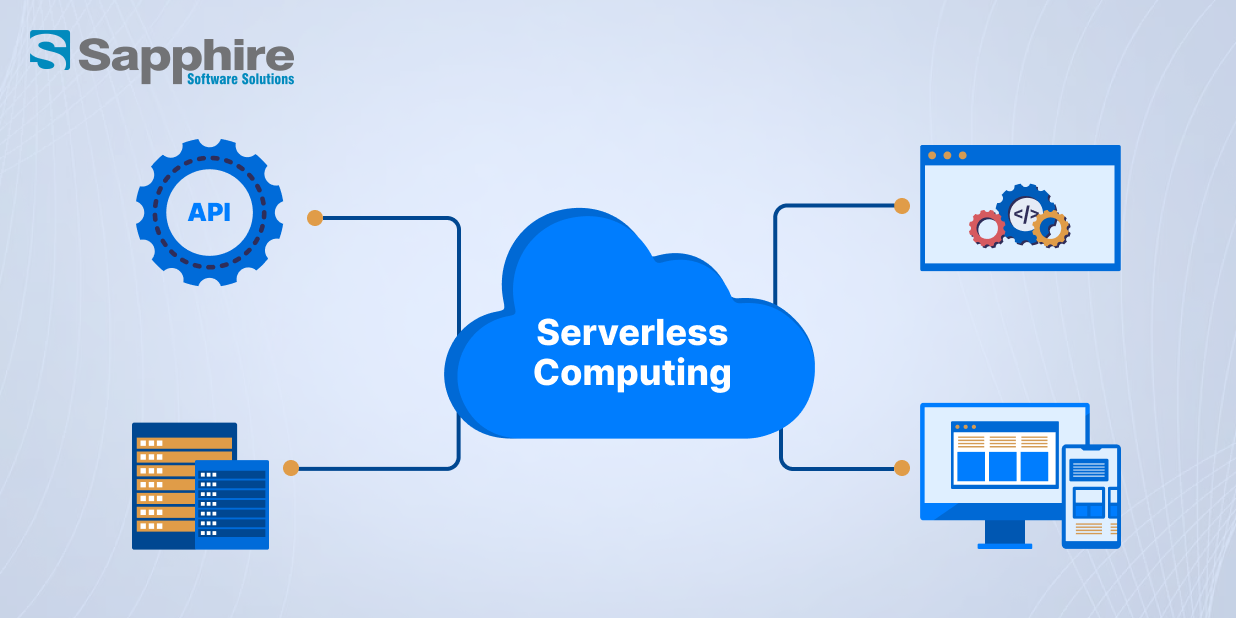
Breaking Down Serverless Microservices Architecture: Pros, Cons & Use Cases
An additional form of the serverless model is the serverless microservices architecture. Rather than create a monolithic application, developers break it up into small, independent functions that run on-demand.
Pros:
- Modularity: Both function has a single purpose, which makes it easier to debug, test, and update to new functions.
- Scalability: Increases and decreases function sized based on usage.
- Flexibility: Different teams can work on different parts/ services of the application concurrently without stepping on toes.
- Polyglot Programming: Different teams can use different languages for their different serverless applications, for better efficiency and specialization.
Cons:
- Complexity in orchestration: Coordinating communication and dependencies between functions can be complicated.
- Cold starts: Some serverless functions have cold start times.
- Monitoring and debugging: Dealing with issues across many services means having to have good observability tools to see what’s going on.
- Increased Vendor Lock-in: Heavy usage of specific serverless computing services can mean less portability.
Common Use Cases:
- E-commerce platforms: Manage order submission, inventory checks, and payment processing as individual serverless functions.
- Real-time data processing: The occurrences of events like user clicks, transactions, or file uploads initiate individual serverless workflows.
- Chatbots and voice assistants: Natural language inputs initiate different functions based on user intent.
- Banking and Fintech apps: Authentication, fraud detection, and transaction logging are all isolated processes to improve compliance, security, and efficiency.
If done correctly, serverless microservices architecture using these principles can be the most effective way to build scalable applications and future-proof designs. Adding microservices and serverless architecture together using cloud computing will allow businesses to change, move faster, and take on less risk.
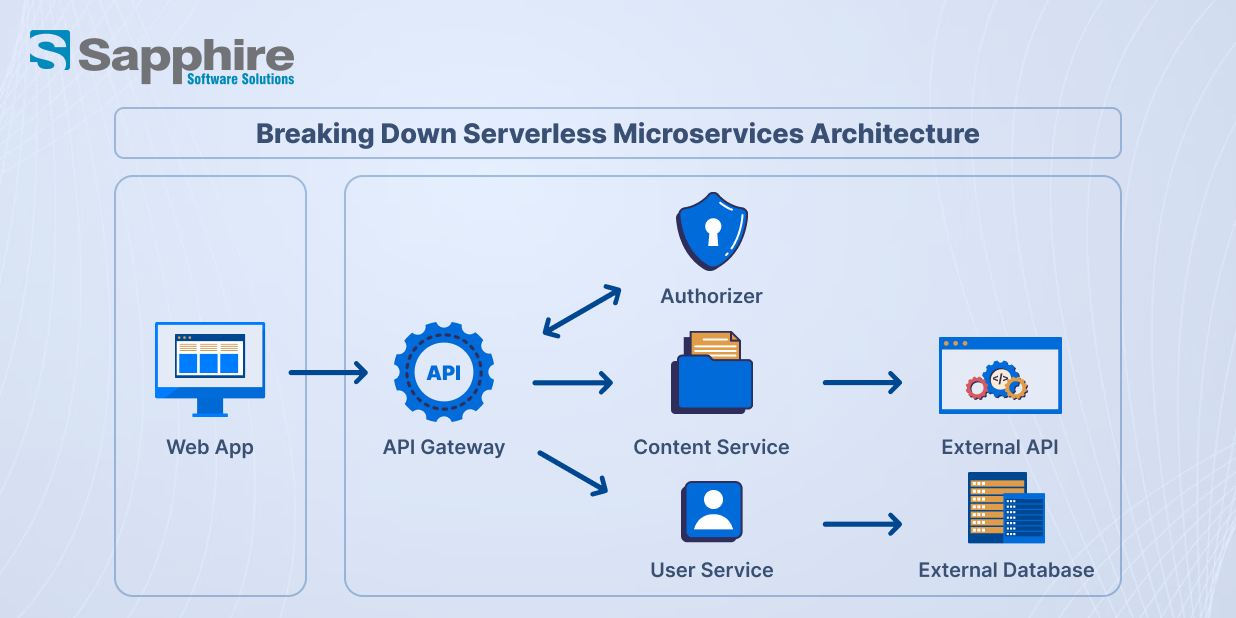
Choosing the Right Serverless Computing Services for Your Cloud Stack
How do you decide on a serverless service in 2025 when there are many options available? Existing Ecosystem. Are you already using services from AWS, Azure, or Google Cloud? Choose the service provider that matches your existing development stack to minimize friction.
Here are some practical considerations:
1. Existing Ecosystem: Are you already using services from AWS, Azure, or Google Cloud? Choose the service provider that matches your existing development stack to minimize friction.
2. Performance Requirements: Do you need to achieve ultra-low latency? If your application requires low latency serverless computing, you should only consider serverless platforms with edge-based computing additions.
3. Language & Framework Support: Different serverless platform implementations will have variance in supported frameworks and programming languages as part of Cloud Native Architecture.
4. Pricing Model: Consider the costs of invocation, duration billing, and free tiers. The lowest price isn’t always the best choice when it comes to serverless services.
5. Compliance and Security: Some industries require data to be stored in certain geographical locations or be compliant with regulations.
6. Tooling & Integrations: Most proven or mature platforms will generally have supportive DevOps tooling, monitoring, and CI/CD releases; all things you should consider for ongoing sustainability.
7. Community and Documentation: Well-documented platforms with healthy participation improve knowledge share, making it easier to overcome challenges with least resistance, while also helping to support or enhance innovation by sharing best practices through collaboration in the community.
8. Multi-Cloud Compatibility: Think about the potential for a multi-cloud strategy in your organization. Look for serverless computing service providers that are designed to work across public cloud providers.
Finding the appropriate tool means finding the appropriate fit, not just hardware and features. The correct serverless computing services support your organizations goals, meet your technical requirements, and align with your budget.
Reduce costs, scale seamlessly, and innovate faster by leveraging serverless technology.
Conclusion:
It is clear why interest in serverless architecture is growing. Serverless architecture aids organizations in reducing infrastructure reliance and accelerates innovation which allows companies to innovate faster while also achieving developing scalable solutions.
From understanding the concept of serverless computing, to discovering the advantages of a serverless architecture, comparing the most popular serverless computing services, embracing serverless edge computing, or creating your own serverless microservices architecture, we can conclude that serverless architecture in the cloud computing world is anything but a passing trend. It’s a paradigm shift in how applications are constructed in a modern world.
Given how more organisations are putting responsibility behind developer productivity and user experience, serverless will only continue to grow in adoption. Whether your development team is building real-time financial applications, scaling your e-commerce backend. Or building connected IoT ecosystems, serverless gives you unrivalled flexibility and responsive development. Whether you are a startup with a first-time app or an enterprise exploring a new tech stack, adopting serverless architecture in 2025 will be your smartest decision.



















